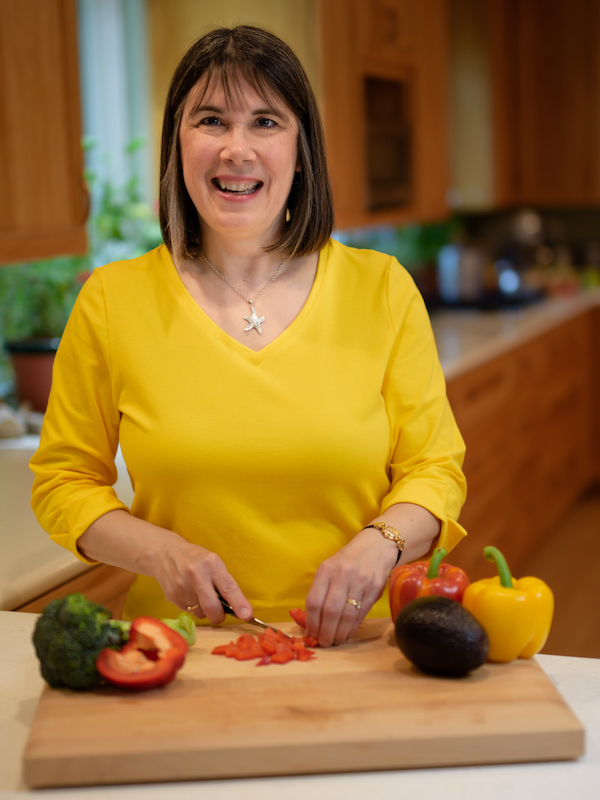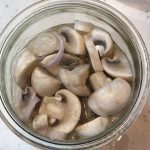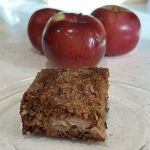
Here is the transcript of the episode:
Welcome to the sensitive kitchen where home cooks are inspired to Cook to Enable Those You Love to Flourish.
I’m Cindy Sullivan, registered dietitian, passionate nutrition, educator, and accomplished home cook. Whether you’re changing, how you cook for food sensitivities, allergies, intolerances, or just trying to eat healthier on a budget. You’re in the right place. Most episodes, I will share favorite recipes as well as modification tips and nutrition benefits. Occasionally I’ll have a guest or special episode like modifying holiday favorites.
My favorite foods are raspberries and homemade chocolate chip cookies. My latest cooking project was long fermented sourdough bread.
Happy New Year Everyone! We’re here today to talk about Cabbage Soup.
Do you have any three ingredient soups in your recipe repertoire? Cabbage Soup is one of our staples. I would also count chicken soup, if you don’t include the kosher salt and water as ingredients as a three ingredient soup.
Another one that’s not homemade: we use Trader Joe’s roasted red pepper tomato soup, and a can of white beans and about one to one and a half cups of frozen spinach to the whole carton of soup. It’s simple, quick and delicious.
I want to make sure you hear about it. I’ll tell you more about it at the end of the podcast, or you can go to foodsensitivitykitchen.com to learn more.
But before we talk about cabbage soup today, I want to tell you that my company, Food Sensitivity, Kitchen has exciting things coming up this month! I’m opening enrollment to our very first class called Cooking to Flourish. The full name is Cooking to Flourish: Meals Your Food Sensitive Family Enjoys.
Back to cabbage soup. I have eaten this one since I was a little girl and my mom made it.
Last year. I spent time on the phone with my daughter, walking her through, making this soup. She had moved into her first college apartment and wanted to make cabbage soup. Later I heard her telling her brother that it tasted like home. I
grew up eating my mom’s cabbage soup with what we called cheese pancakes. They were crepes with cottage cheese filling. Her Russian grandmother called them blintzes. Yum!
Cabbage soup has a lot going for it. It’s inexpensive, nutritious, warm, easy, and filling on cold days. It freezes well. And it’s low in calories.
I’ve honestly never looked for another cabbage soup recipe. So recently I was looking at other recipes before publishing this one, and I was surprised at the long list of most recipes contained. They looked wonderful, but they were what I would call vegetable soup, not cabbage soup.
Bacon, cabbage and tomato juice are the three ingredients in this soup. Well, and a little water.
Let’s talk about the benefits of each of these:
Tomato juice is full of antioxidant lycopene. Check out the fermented ketchup podcast, which is episode zero, zero six to learn more about lycopene.
Besides lycopene, tomato juice contains vitamin C, vitamin A, potassium and two grams of fiber per cup, which is surprising for a juice. I have found I liked Campbell’s brand best in this recipe, but my mom uses all kinds.
Cabbage. The second ingredient is a cruciferous vegetable, which means it is loaded with sulforaphane, a potent compound that helps your body fight inflammation. It’s also an excellent source of vitamin K a vitamin that many Americans don’t eat enough of. One cup raw cabbage provides 85% of your daily recommendation of vitamin K. That means cooked cabbage provides even more because it’s more dense – you’ve lost some water.
Cabbage is also a good source of vitamin C. However, it’s difficult to determine how much vitamin C remains after cooking the cabbage. I looked at a bunch of studies and they indicate that 10 to a hundred percent of the vitamin C is destroyed by cooking. It depends on how long the cabbage is cooked at and how intense the heat is. Assume you’re getting some vitamin C in this recipe, but not as much as raw cabbage. Raw cabbage provides about 50% of your DRI daily recommended intake for vitamin C per cup.
And while we’re on the subject of nutrient retention from cooking, let me mention that vitamin K is not affected by cooking and neither are the minerals provided. In fact, in terms of minerals, loss of minerals in cooking comes from the minerals leaching into the cooking water, which is then discarded. But the good thing about this recipe and most soups is that you’re then eating the cooking liquid as well. So you get no mineral loss.
Like most vegetables cabbages low in calories with only about 40 calories per cup.
The third ingredient in this soup is bacon. It is loaded with delicious flavor. Although meat fat is not particularly good for you. It’s just a very small amount in this recipe that gives a wonderful flavor.
The challenging part of this recipe is that I can’t give you exact amounts. How much tomato juice you use is dependent on how big your cabbage is and if you use the whole thing or just half. So I’ll do my best to give you some guidance.
The first thing you want to do is slice your cabbage. The compound that helps your body fight inflammation, sulforaphane needs some time to develop once cell walls are broken and before heat or acid are added.
So chop your cabbage first. Rinse your cabbage under cool water and discard, any tougher wilted outer leaves.
You’re going to cut your cabbage in half so that you cut through the core. Think of it as cutting poll the poll, rather than around the equator. This will help keep the cabbage together as you slice it. If you accidentally slice it the wrong way or half it the wrong way. no worries. It’ll still work,
Next slice several thin slices from one spot on the cabbage half. And I put it face down so that the cut side is on the cutting board so it doesn’t move. And then move it a little to the right or left and slice several thin slices. Again, the reason you’re rotating it is so the length of the slices doesn’t get too long, more than about two inches long. They’re hard to pick up on your spoon,
But if you prefer to keep slicing in one place, you can do that. Just cut the longer slices into several pieces before you put them in the pot. Keep these slices fairly thin. I try to keep them about an eighth of an inch or so.
If you have a small cabbage, slice the whole thing, except the core. If you have a large cabbage, you may just want to start with half, especially depending how much tomato juice and bacon you have.
Cutting the cabbage is the most time-consuming part of this recipe, especially the first several times you do it. Place your cabbage in a large bowl, or just leave it in a mound on your counter.
When your cabbage is all sliced, take your package of bacon and slice it into half inch thick pieces. I usually cut the whole pound o(r 12 ounce) package, however you buy your bacon. Freeze the other two portion if it’s a 12 ounce package or a three portions of it’s a pound package. I just put them in plastic wrap, place them in a freezer bag and label them. Then the next time you want to make cabbage soup, it’s all ready for you.
Sometimes I use a knife to cut the bacon, and sometimes I just use a pair of kitchen shears. When the bacon is cut, place it in a single layer on the bottom of a large soup pot. I usually use either eight or 12 quart pot.
At the same time, turn on your tea kettle. You’ll need about two to four cups of boiling water to steam the cabbage.
So you’re going to cook the bacon until it’s well cooked, remove the little pieces of bacon from the pot and leave the bacon drippings in the pot. Add the cabbage to the pot and pour in about an inch of boiling water (or close to boiling – my tea kettle boils before I’m ready for the water. So I just let it sit in a tea kettle turned off until I’m ready for it.)
Now you’re going to pour this water into the pan, but you’re going to be very careful because it will steam up and you don’t want to burn yourself. Place a lid on your pot and let the cabbage steam over medium heat for about 15 to 20 minutes stirring at once or twice.
After about 15 or 20 minutes, test the cabbage to see if it’s done. Select a thick piece of cabbage, blow on it to cool it, and bite into it to see if it’s cooked throughout. If it’s still crunchy or uncooked in the middle, steam it for a few more minutes. When your cabbage is done, add the tomato juice.
After pouring in the container of tomato juice, rinse the can or the bottle with water about a cup or so, and add that water to the pot.
Now is the tricky part. Do you need more tomato juice? I always purchase two containers, two cartons or cans of tomato juice. So I could add more if I need more. You want there to be a lot of cabbage in the soup, but you’re not flavoring a big bowl of cabbage with just a little tomato juice.
See the pictures on my website, but I’m guessing here you want about half cabbage and half tomato.
Add the bacon back in and heat until the soup is hot and it’s ready to serve.
As I mentioned, this soup freezes well.
I’ve also frozen the steamed cabbage with the bacon. When I thawed it, I just added a small amount of water to a pot, covered the pot, put it on medium, low heat until it was thawed. I then added tomato juice and some water to rinse the jar and brought it to a boil. It seemed thick to me, so I added a little water, maybe a cup or so.
This is a big warm bowl of vegetables to serve with your lunch or dinner. Enjoy!
Thank you. Thank you so much for listening today. If you’re enjoying the podcast, I’d love to have you share it with a friend or leave me a review. Both will help others find the show so that they can benefit.
Remember I told you at the beginning about our exciting news? Food Sensitivity Kitchen has a new class coming up – I’m opening enrollment for our very first class.
It’s called Cooking to Flourish. The full name is Cooking to Flourish: Meals Your Food Sensitive Family Enjoys. It is an intimate masterclass that will enable you to put delicious dinners on the table that will taste good to your family, so they will feel good after eating and ensure that you don’t spend all day in the kitchen.
I like to call this masterclass a ” cooking lab in your own kitchen.”
You’ll be testing recipes in your own kitchen with your family so that, you know, the recipes will work for you. It’ll be a small class with a maximum of 15 participants. So you’ll be sure to receive individualized help and your questions answered. You’ll walk away with a game plan that works not just on paper, but with the actual sensitivities, allergies, intolerances and tastes that your family has.
Because I’m a registered dietitian, I’m also always concerned about nutrient intake. So part of the planning process, we’ll also be looking at meeting nutrient needs, which can be challenging with multiple food sensitivities.
I am so excited to be doing a beta launch of this class. Nothing like this exists. I’m excited to help you modify recipes and put them together in a healthy plan for your family.
This is an eight week interactive course. And if you or someone, you know, might be interested, go to foodsensitivitykitchen.com and look for Cooking to Flourish under the services tab. Or you can email me at [email protected] to learn more. Thanks so much for listening. Have a great day. Bye-bye.




